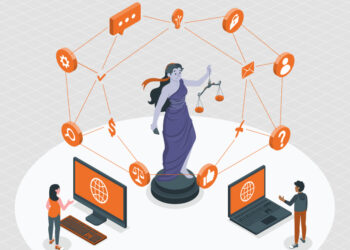Blockchain technology, initially recognized for powering cryptocurrencies like Bitcoin, has evolved into a transformative force across various industries. Its core attributes—decentralization, transparency, and immutability—offer solutions to longstanding challenges in sectors ranging from finance to healthcare. This article explores the multifaceted applications of blockchain technology beyond its association with digital currencies.
A. Understanding Blockchain Technology
At its essence, blockchain is a distributed ledger system that records transactions across multiple computers. This decentralized approach ensures that data is not stored in a single location, enhancing security and reducing the risk of data tampering. Each block in the chain contains a number of transactions, and every time a new transaction occurs, a record of that transaction is added to every participant’s ledger.
1. Key Features
Decentralization: Eliminates the need for a central authority, distributing control across the network.
Transparency: All participants have access to the same data, promoting trust.
Immutability: Once data is recorded, it cannot be altered without consensus from the network.
B. Blockchain in Financial Services
While cryptocurrencies introduced blockchain to the financial world, its applications extend far beyond digital coins.
1. Cross-Border Payments
Traditional international money transfers can be slow and costly. Blockchain enables faster, more affordable cross-border transactions by removing intermediaries and providing real-time settlement capabilities.
2. Smart Contracts
These are self-executing contracts with the terms directly written into code. They automatically enforce and execute agreements when predefined conditions are met, reducing the need for intermediaries and minimizing fraud.
3. Trade Finance
Blockchain streamlines trade finance processes by digitizing and automating paperwork, enhancing transparency, and reducing the risk of fraud.
C. Supply Chain Management
Blockchain enhances supply chain transparency and efficiency by providing an immutable record of product journeys.
1. Product Traceability
Consumers and businesses can trace products from origin to shelf, ensuring authenticity and ethical sourcing.
2. Inventory Management
Real-time tracking of goods reduces inventory errors, optimizes stock levels, and improves demand forecasting.
3. Fraud Prevention
Immutable records help prevent counterfeit goods from entering the supply chain, protecting brand integrity and consumer safety.
D. Healthcare Applications
Blockchain addresses critical issues in healthcare, such as data security, interoperability, and patient consent.
1. Secure Patient Records
Patients’ medical histories can be securely stored and accessed by authorized personnel, ensuring data integrity and privacy.
2. Clinical Trials
Blockchain ensures the integrity of clinical trial data, preventing tampering and enhancing trust in research outcomes.
3. Drug Traceability
Tracking pharmaceuticals from manufacture to delivery helps combat counterfeit drugs and ensures regulatory compliance.
E. Identity Management
Blockchain offers solutions for secure and user-controlled digital identities.
1. Self-Sovereign Identity
Individuals can manage their digital identities without relying on centralized authorities, enhancing privacy and control.
2. KYC Processes
Financial institutions can streamline Know Your Customer procedures by accessing verified identities on a blockchain, reducing duplication and improving efficiency.
3. Voting Systems
Blockchain-based voting platforms can enhance electoral transparency, prevent fraud, and increase voter turnout through secure and accessible systems.
F. Real Estate and Property Rights
Blockchain simplifies property transactions and ensures clear ownership records.
1. Land Registries
Immutable records of land ownership reduce disputes and fraud, providing clarity and security in property transactions.
2. Fractional Ownership
Blockchain enables the division of property ownership into digital shares, allowing for more accessible investment opportunities.
3. Smart Leases
Automated lease agreements can manage rental payments and terms, reducing administrative burdens and disputes.
G. Energy Sector Innovations
Blockchain facilitates decentralized energy systems and promotes sustainable practices.
1. Peer-to-Peer Energy Trading
Consumers with renewable energy sources can sell excess energy directly to others, fostering local energy markets and reducing reliance on traditional utilities.
2. Grid Management
Blockchain aids in balancing energy supply and demand, optimizing grid performance, and integrating renewable energy sources.
3. Carbon Credit Tracking
Transparent recording of carbon credits ensures accurate accounting and promotes environmental accountability.
H. Government and Public Services
Governments are exploring blockchain to enhance transparency, efficiency, and citizen engagement.
1. Public Records
Immutable records of public data, such as birth certificates and licenses, reduce bureaucracy and improve access.
2. Tax Collection
Automated tax systems can ensure accurate and timely collection, reducing evasion and administrative costs.
3. Welfare Distribution
Blockchain can streamline the distribution of welfare benefits, ensuring they reach intended recipients without delays or fraud.
I. Education and Credentialing
Educational institutions utilize blockchain to verify and share academic credentials securely.
1. Diploma Verification
Employers and institutions can instantly verify academic qualifications, reducing fraud and administrative burdens.
2. Lifelong Learning Records
Individuals can maintain a comprehensive and tamper-proof record of their educational achievements and skills.
3. Academic Publishing
Blockchain can ensure the integrity and traceability of academic research, promoting trust in scholarly communications.
J. Challenges and Considerations
Despite its potential, blockchain adoption faces several challenges.
1. Scalability
As the number of transactions grows, maintaining speed and efficiency becomes a concern.
2. Regulatory Uncertainty
Lack of clear regulations can hinder adoption and innovation in blockchain applications.
3. Energy Consumption
Some blockchain networks, particularly those using proof-of-work consensus mechanisms, consume significant energy, raising environmental concerns.
4. Interoperability
Ensuring different blockchain systems can communicate and work together is essential for widespread adoption.
Conclusion
Blockchain technology’s potential extends far beyond cryptocurrencies, offering transformative solutions across various sectors. By enhancing transparency, security, and efficiency, blockchain stands poised to revolutionize industries and redefine how we conduct transactions, manage data, and interact with digital systems. As the technology matures, addressing its challenges will be crucial to unlocking its full potential and fostering a more decentralized and trustworthy digital future.














